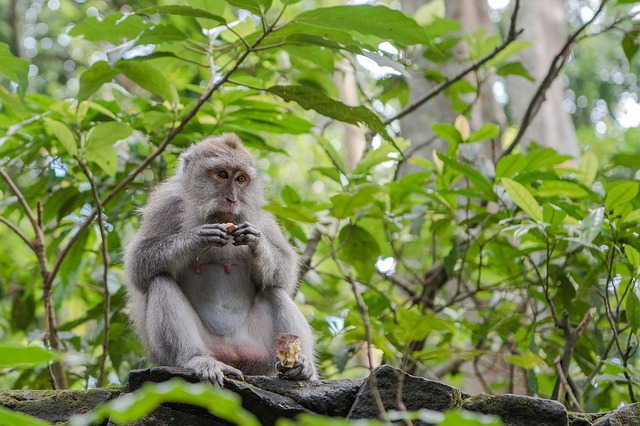Global warming, pollution, degradation of cultural sites, deforestation … the effects of overtourism on the environment and populations can be dramatic.

MURMURATION is one of the start-ups that has joined the acceleration program of Climate-Kic France . This program is intended for all start-up companies that are motivated and committed to solving the problems related to climate change. Thanks to Flockeo, we want to implement an inclusive approach!
Over-tourism, over-crowding of sites and the under-frequenting of other sites which, however, have put in place the necessary infrastructures are critical for travel professionals who see their “working tool” deteriorate or, conversely, little known. MURMURATION has developed a solution that combines environmental studies and a web platform, Flockeo, in order to provide reliable indicators to manage a tourist destination, to make it known and to make visible the daily work of the traveling professionals who commit themselves.
Some places are not suitable to receive too many travelers. In Venice, for example every year millions of visitors for some tens of thousands of Venetians who live there. Unesco has also listed the city on the list of World Heritage in Danger. This was also the case for the city of Dubrovznik in Croatia last summer.
For example, the need for water to fill pools in hotels and fossil fuels, for example to cool in countries where resources are very limited, can create major problems. The countries of the Mediterranean are the most exposed because most of them favor mass tourism without implementing the necessary infrastructures.
The most infamous example is the Maya Bay beach from the movie “The Beach” with Leonardo Di Caprio. This beach was closed by the Thai authorities until 2021 to allow the coral reefs to reform and thus prevent the erosion of the bay. The damage to the natural ecosystem of this bay is such that the beach had to be closed to motorboats and tourists.
The growth of tourism by 2050 will double energy consumption and greenhouse gas emissions. The carbon footprint of tourism is generated by transport but also by the need to produce all that tourists need on their vacation spot. The two tourist cities, Jakarta and Denpasar, in Bali are among the most polluted cities in the world.
While the Global Climate Strike has begun these days around the world, we are looking at MURMURATION SAS for the growing impact of two crucial and social issues in terms of overtourism – which can be found through the case study from BALI.
Overtourism has become a crucial issue for the tourism sector. Moreover,, the effects of climate change have major issues, caused by humans and that directly affect our daily lives and the future.
We propose to counter the challenge of overtourism through the use of satellite data. Take the example of Indonesia: How a study on environmental impact could help to change the tourism sector in Bali
Bali is an Indonesian island famous for its wooded volcanic mountains, rice paddies, beaches and coral reefs. Unfortunately, it suffers from overtourism especially south of the island. Buildings are accelerating at the expense of nature and local life. and the lively tourist coasts do not benefit as much as locals in terms of economic development. the lively tourist coasts do not benefit as much as the locals in terms of economic development.

The map above gives some pointers to favor sustainable tourism, a true vector of love and peace between cultures.
The small town of Munduk offers to explore the inner region of Bali. The inhabitants of Munduk are less accustomed to crossing tourists but he remains very enthusiastic to meet and exchange with foreigners. The nature around Munduk allows beautiful breakaways. Many hiking trails start from Munduk and the surrounding hills soon become accessible. There are great walks in the forest with beautiful waterfalls and breathtaking views of rice terraces to the west of the city. Small Indonesian restaurants called “warung”, very simple and cheap, allow Indonesians and tourists to enjoy the local gastronomy. The traveler becomes an active player in his journey by choosing to go where his presence will be a source of meetings and sharing. The map above would avoid the mistakes made in the past and propose a sustainable tourism management taking into account the water needs, the establishment of the infrastructures necessary for the accommodation, and also the management of waste and transport for the benefit of local residents as well.

Indonesia is the third tropical forest in the world, even more threatened than the Amazon and regularly ravaged by the flames. Every minute is an area equivalent to six football pitches that is deforested according to the magazine Geo. The West Bali National Park is an example of preservation: 160 species of birds have been listed in the park, including the virtually extinct Bali Starling (Leucopsar rothschildi), the only endemic vertebrate species in Bali, the icon of wildlife. Bali. This is the main reason why this national park was created in 1941. In 2001, it was estimated that only six starlings would have survived in the wild, all in this park. Since then, captive breeding and reintroduction efforts have continued at a steady pace, but poaching pressures remain a major problem. With this in mind, a second reintroduction program was launched in the remote areas of Nusa Penida off Sanur Beach in 2004.
Tourism accounts for more than 10% of global GDP and 7% of all international trade activity. With $6.1 billion in revenue, tourism is the world’s third largest exporter, ranks after chemicals and fuels and ahead of automotive products.
Moreover, tourism is a local development aid when it leads to improvements in terms of infrastructure, such as transport (airports, roads, rail networks), land use planning for drinking water and sanitation, energy consumption, medical services, mobile phone networks and security that are appreciated by tourists and locals alike.
Inclusive growth in the tourism sector affects other sectors. Indeed, tourism depends on a large supply chain, which includes transport providers, interpreters, accommodation, agricultural producers, catering, energy, water supply, preservation of heritage. cultural, arts and crafts, construction and maintenance of buildings, preservation of biodiversity and wildlife. Thanks to this inclusive approach, tourism can benefit a large number of people.
In addition, there is a big issue for both urban and rural populations. By 2050, the urban population will increase to 66 percent, or six billion people, with concentrated growth in Asia and Africa. Many cities will continue to base their economic growth on tourism and its potential for job creation and infrastructure improvement. Rural communities attract investment to promote rural areas and also to attract the profits of tourism.
Ecotourism is growing strongly. Not only does it increase the conservation value of Nature, but it also helps to generate funds useful for its conservation. A survey conducted by UNWTO found that wildlife tourism accounts for 80% of total annual travel sales in Africa, and this share is growing. The economic impact of nature and wildlife activities motivates local people to play an active role in conserving biodiversity and preventing poaching.
Policies supporting ecotourism, or green tourism, make it possible to receive financial contributions for the preservation of biodiversity, water reservoirs and to help reduce CO2 emissions. Finally, tourism is often an innovative sector in terms of sustainable consumption and awareness of climate change. There are many examples of tourist resorts introducing wind and solar energy, organic farming and sustainable fishing.
Cultural tourism is an important segment of tourism, and visitor spending on tickets, guides and souvenirs contributes to the capital needed to protect important sites. The UNWTO “Silk Road” program, which includes 33 states, is a remarkable example.
Intangible cultural heritage, through music, performing arts and oral traditions can also be revitalized or protected by tourism. The local communities organize cultural excursions whose purpose is to share cultural diversity, an invaluable wealth for travelers who are aware of it.
Tourism can be an effective way of involving visitors in philanthropy. Social and solidarity tourism allows visitors to participate in local lives, to understand local cultures and to show empathy. For journeys also make it possible to encourage the creation of family bonds, reflections on oneself, on Life and Love.
Tourism can serve as a tool to recover from a major conflict. Rwanda is one of the most striking examples. Rwanda becomes one of the world’s destinations based on ecotourism. The priority given by the Rwandan government to sustainable development is bearing fruit. The development of sustainable tourism has not only brought new inclusive employment patterns, it supports growth and improved infrastructure in the country, and thus contributes to post-conflict stabilization.
To know more : – The World Bank study 20 Reasons Sustainable Tourism Counts for Development – UNWTO “Silk Road” program – New York Times Nyungwe forest is a magnificent place for ecotourism